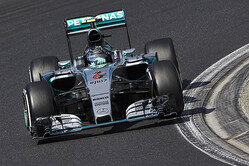


09/12/2022
NEWS STORY
 The FIA's head of single-seater technical matters, Nikolas Tombazis admits that going forward the sport is seeking to make cars leaner and thereby hopefully meaner.
The FIA's head of single-seater technical matters, Nikolas Tombazis admits that going forward the sport is seeking to make cars leaner and thereby hopefully meaner.
The increased width, length and especially weight of the new generation of F1 cars has made them unwieldly and lazy, and at narrow tracks like Monaco and Baku made overtaking all the more difficult.
In 2013, the year before the introduction of the hybrid formula, the minimum weight was 642kg, compared to 2009, the final year of in-race refuelling, when it was 605kg, and 600kg in 2000.
Ahead of this season the planned minimum was 790kg but this was subsequently raised to 798kg, with a 2kg reduction planned for next season.
Understandably, along with the other issues brought about by the rules overhaul, many of the teams spent much of the season attempting to get down to the minimum.
While 2026 will see the new generation of power units, the sport is also planning further changes to the cars, one of the key aims being to "reduce car dimensions" and "reduce or contain car mass".
The current generation of cars are a maximum 2,000mm wide, up from 1,800 in 2017, while the maximum wheelbase is 3,600mm.
It is hoped that reducing the cars' dimensions could lead to a weight reduction of around 35kg.
"It is realistic to make them a bit lighter," the FIA's head of single-seater technical matters, Nikolas Tombazis tells The Race. "Not a massive amount; we have to consider that the difference in weight since 2000, say 20 years ago or so, is about 200kg, which is a massive number.
"Out of those 200kg, about 100 comes from the power unit," he continues, "so from the electrical parts, batteries, turbos and so on. That is a big weight increase.
"But it it is necessary to keep Formula 1 relevant to the directions of society," he warns. "While a petrol-head would like a V10 and end of story, we know we have to go in the direction we've gone. So that counts for about half of the weight increase. About 50kg-odd are for safety. So halos, much stronger chassis, bigger protections and so on and so forth. So again, nobody would want to compromise that.
"Then there's where the opportunity is, and there's about 15-20kg because of more complex systems on the cars and there's about 30-35kg on car dimensions. So cars being much longer and wider, bigger tyres and so on.
"We believe in the car dimensions there lies an opportunity. We would want 2026 cars to be quite a lot shorter and probably maybe a bit narrower as well and all of that is going to contain the weight increase.
"On the other side, there is a battery increase because we are going more electrical which is adding a bit of weight. So the net effect I hope is going to be a bit lighter, but not a massive amount."